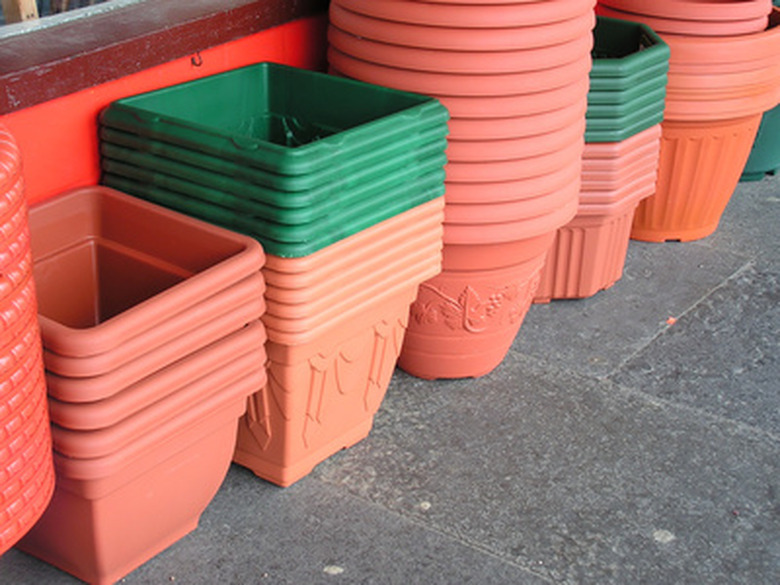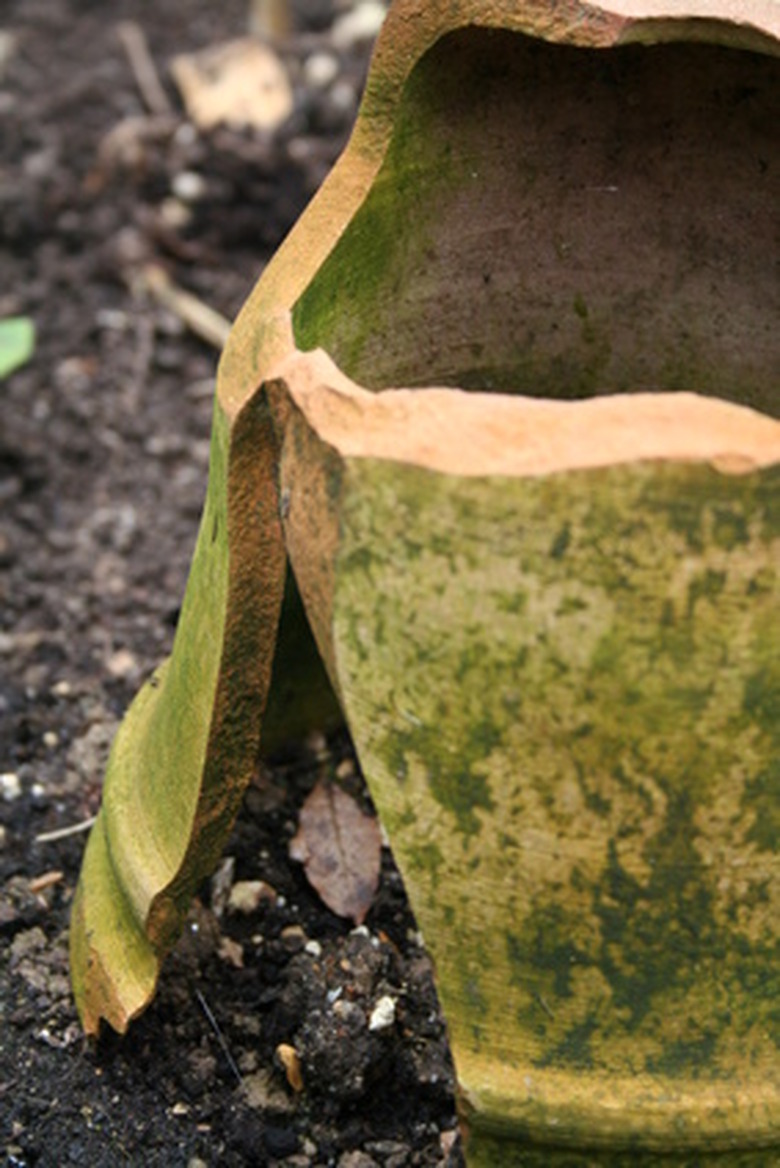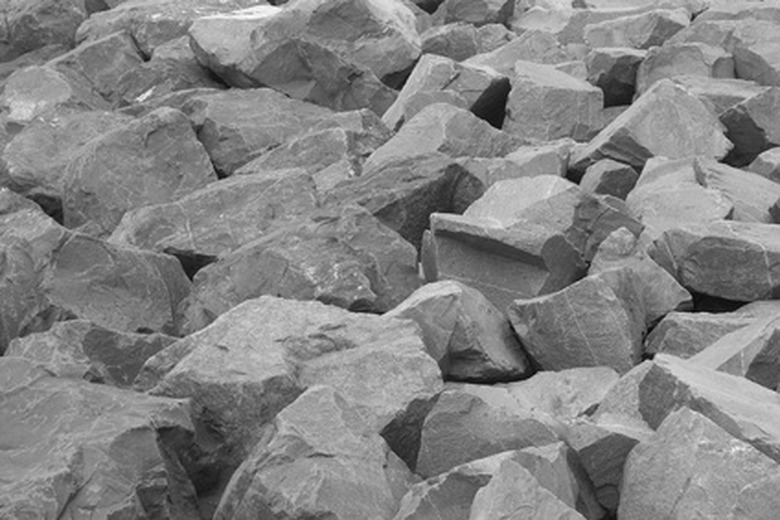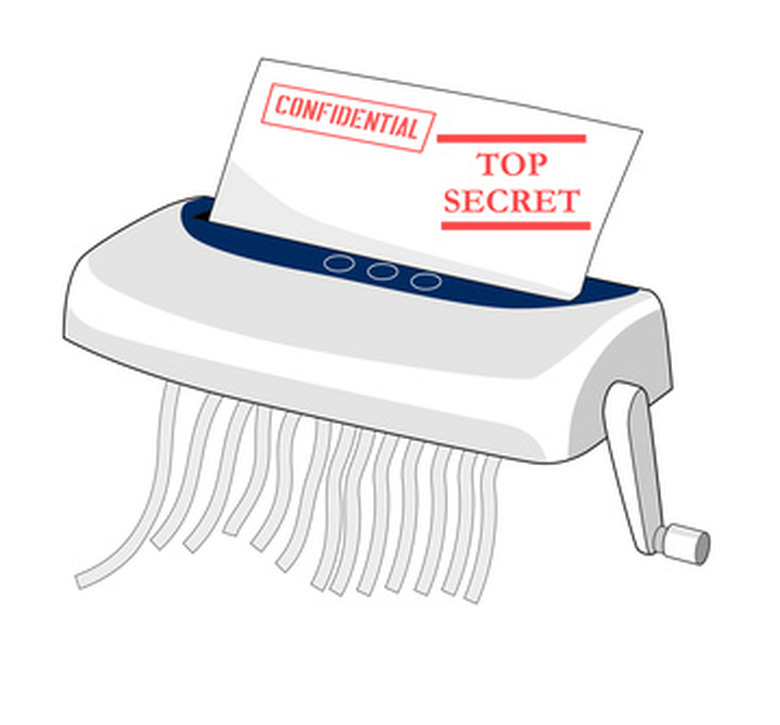Ways To Use Less Potting Soil In Big Pots
When planting in large pots, it is neither necessary nor cost-effective to fill the entire pot with soil. Adding other materials to fill the space will prevent soil compaction and provide an opportunity to recycle, keeping bulk out of local landfills. Most filler materials will compost or can be used as mulch or to fill low areas in your yard at season's end.
Broken Pots
Old clay pots that have chipped or cracked can be broken into similar-size pieces to fill the bottom 2 or 3 inches of your large plant pot. Dinnerplanner.com states that the curved clay pieces improve drainage. If you break two or three holes around the base of your large pot, toads and salamanders may take up residence, providing natural insect control.
Brick, Stone or Concrete
Broken paving stones, bricks or concrete chunks from demolition sites can be used to fill your largest pots by at least 1/3. Use a sledge hammer to break everything into fist-size pieces. Add large, sharp-sided gravel in a second layer, at least 2 inches deep if there is enough room. The gravel fills any large spaces between each chunk of stone, brick or concrete.
- When planting in large pots, it is neither necessary nor cost-effective to fill the entire pot with soil.
- Old clay pots that have chipped or cracked can be broken into similar-size pieces to fill the bottom 2 or 3 inches of your large plant pot.
When the growing season ends, pour everything from the pot into a low area in your yard, cover it with additional soil and landscaping fabric and plant a ground cover plant such as Rhus aromatica (Fragrant sumac), Saponaria ocymoides (Soapwort) or Asarum europaeum (European ginger).
Shredded Paper
Shredded office paper and newspaper can be used to fill as much as half the pot. As long as you use do not use any coated, shiny or colored pages, shredded paper will eventually break down into soil if you add coffee grounds, tea leaves and fruit or vegetable peelings in alternating layers. The soil in these pots can be added to your compost heap at the end of the season.
Nesting
Find a pot that is 1/4 to 1/3 the size of the main pot, with a diameter the same as the base of the larger pot or slightly smaller. Place it upside down inside the first pot. Fill the remaining space with soil alone or back-fill around the smaller pot with gravel or shredded paper.
- When the growing season ends, pour everything from the pot into a low area in your yard, cover it with additional soil and landscaping fabric and plant a ground cover plant such as Rhus aromatica (Fragrant sumac), Saponaria ocymoides (Soapwort) or Asarum europaeum (European ginger).
- As long as you use do not use any coated, shiny or colored pages, shredded paper will eventually break down into soil if you add coffee grounds, tea leaves and fruit or vegetable peelings in alternating layers.
Packing Peanuts and Bubble Wrap
Fill the pot halfway with packing peanuts or wads of bubble wrap. Fill the remainder of the pot with soil. While this material will not break down into soil like the shredded paper, it will create drainage like the brick, stone and concrete chunks. Do not dump bubble wrap outdoors at the end of the season. Instead, cut it into 1/2-inch strips and cut again to make 1/2-inch squares. It will then be safe to use as mulch in your indoor plant pots.
Burlap
Old burlap coffee sacks and natural-fiber landscaping fabric can be cut into strips and packed into your plant pot until it is halfway full. Like the shredded paper, burlap and natural-fiber landscape fabric will break down into compost by the end of the season if you layer it with fruit and vegetable peelings, coffee grounds and tea leaves.
- Fill the pot halfway with packing peanuts or wads of bubble wrap.
- Old burlap coffee sacks and natural-fiber landscaping fabric can be cut into strips and packed into your plant pot until it is halfway full.
Go Nuts
Fill the bottom half of the pot with peanut, walnut or coconut shell pieces. Hazelnut and pecan shells can also be used this way. Nut shells will degrade into soil over time. The soil in these pots makes great mulch when the season ends.
Styrofoam and Plastic Bottles
Sunnyside Greenhouses Limited of Calgary, Alberta, recommends using a chunk of Styrofoam or some empty plastic bottles in the bottom of the largest plant pots to fill space and reduce the need for large amounts of potting soil. It is easy to sort the filler from the soil at the end of the season. The same bottles can be used season after season if you rinse them and allow them to dry. Add a little peroxide to the rinse water to ensure that fungus and harmful bacteria do not have the opportunity to infect your plants next season.
- Fill the bottom half of the pot with peanut, walnut or coconut shell pieces.
- The same bottles can be used season after season if you rinse them and allow them to dry.



